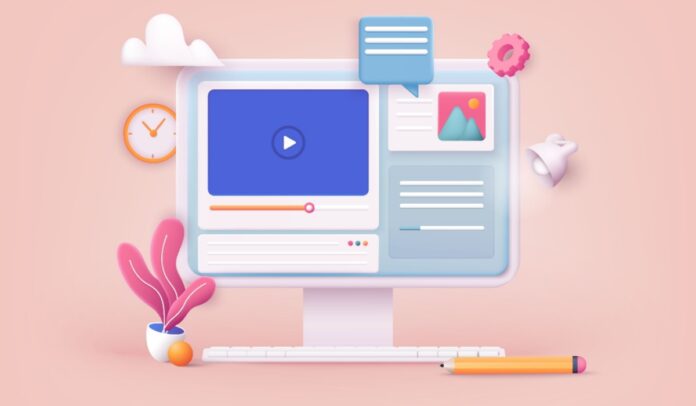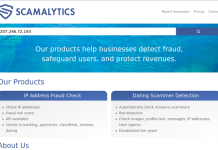
Best ways to Design an Online Course will be discussed in this article. If you subscribe to a service from a link on this page, Reeves and Sons Limited may earn a commission. See our ethics statement. Learning how to design an online class is much like preparing a curriculum when teaching students in a physical classroom. There’s a teacher, course structure, assessments, and communications between the teacher and students. However, you also have to deal with the “online” portion of the equation, like setting up a website (which serves as your landing page, classroom, and communications hub), creating videos, and configuring collaboration and feedback mediums specific to online learning.
It’s a great idea to create an online course, but first you must learn the basics of what goes into a class, how to evaluate your students, and figure out if an instructional design needs adjusting. In this guide, we explain the steps you should go through while designing and launching an online course. We’ll also cover best practices, FAQs, and other tips to make your course the best it can be!
How to Design an Online Course In 2023
In this article, you can know about How to Design an Online Course In 2023 here are the details below;
There are 6 major steps to follow when constructing the foundation of your course. Although the specifics may change based on your classroom format and learning content, we recommend walking through the steps to ensure you don’t miss anything.
Establish learning objectives: Get a specific goal in mind (why do you want to start this class?) and make it as concise as possible; after that, implement ways to measure its success and allow for feedback and communications
Learn about your students: Who are your students? How do they like learning? What are they trying to achieve? What do they currently know on the subject? Ask yourself these questions, then eventually collect feedback from the actual students to hone your understanding of the demographic
Construct the course development: Draw out storyboards and course outlines to establish an understandable course flow; it’s wise to compile related content and sources that you can use to strengthen arguments throughout the course
Incorporate tests and other assessments: Connect all learning goals and lessons to assessments; tests and quizzes and activities provide a way for students to evaluate their knowledge and feel satisfied about their progress
Create a comfortable and useful online learning experience: Maintain a consistent presence within the online learning community; be open to questions; nurture a friendly community that’s focused on the course topic; give feedback to students and provide tips for improving
Evaluate the effectiveness of your courses: Utilize a learning management system to understand engagement, conversion, and dropout levels; ask for feedback from students with ratings, reviews, and surveys; run metrics on things like test scores, course completions, and returning students
With those steps in mind, you now have a start-to-finish structure for designing an online course and also bringing it to a point of evaluation and expansion. Continue reading to learn how to design an online course with curriculum tips.
Designing an Online Course Curriculum
The structure of your online course is called the curriculum.
To establish a well-honed curriculum, you must figure out your learning goals. It’s also wise to write down any roadblocks or restraints during the design process.
Ask these questions:
- What is expected of a student when they sign up for the course?
- How much knowledge on the topic should the student have?
What do the students intend to do with the knowledge they obtain from your course?
Will some students have restrictions like language, hearing, sight, or age? For instance, you should accommodate for the hard of hearing with closed captions on videos.
With those questions answered, you’re beginning to map out the course curriculum. You’re getting closer to understanding the best course content and how to connect with students.
Now that you have a stronger understanding of your students and their goals, begin designing the curriculum with content and course formats.
Here are some content and format options to consider:
- Real-time sessions
- Face-to-face sessions
- Recorded tutorials
- Written course material
- Video lectures
- Audio lectures
- Slideshow presentations
- Activities
- Group work
- Discussions and comments
- Assessments (like assignments, tests, quizzes, and even games)
Pick some options from this list and add them to your curriculum. As you add to the course, you slowly build its layout. You might even consider visual planning items like storyboards, spreadsheets, or slideshows to visualize how the course will look and function.
Next up, learn about the best practices for designing high-quality online course content.
Best Practices for Designing Effective Online Course Content
The curriculum is coming together, but you must now create the actual content behind that syllabus. For instance, you may know that you want to teach a video segment called “Photoshop Automation for Beginners,” while also offering an end-of-lesson quiz with discussion. But how do you go about designing that section of the course? Here are some best practices to help you out.
Encourage an Online Learning Environment of Community and Interactions
From discussion forums to a comment area, there are several ways to create a culture of collaboration and community for an online course. And that’s extremely important in online learning, since the students are missing out on the in-person aspect of classroom learning.
Provide this next level of value from the start, showing that you’re fostering a tight community of learners, and that no ideas are bad ideas. Have a strong communication system, be available to answer questions, and consider things like collaborative projects and peer review activities.
Not only does a community make your course more attractive, but it boosts learning outcomes and improves the chances of people sticking around for the current course (and more courses to come).
Meet the Needs of Your Students
If you neglect what the student needs, no online course will find success. That’s the whole idea behind understanding your students, where they come from, their ages, genders, goals, and desires. A 20-year-old girl who wants to start her own photography business has drastically different needs for a Photoshop class than a 65-year-old retiree who needs a hobby.
Therefore, ask the following questions when learning how to meet the needs of your students:
- Who are the students? (Age, gender, location, etc.)
- How experienced are they on the topic?
- What is their general education level?
- What are their goals?
- How much time do they have to commit to the class?
- How will they be learning? (At the library, on their phone, by watching videos, reading, etc.)
Answering these questions ensures students find your course useful. A student who wants video learning won’t stick around if it’s all audio or written content. A young post-graduate seeking a career doesn’t want to take a course catered to retirees looking for a hobby.
Logically Organize the Content
Every curriculum starts as a mess of information. You think up a good idea for a lesson and throw it into the outline.
Yet, at some point, you need to organize that content to create a logical flow, from start to finish, with headings. The success of a course often relies on its organization. Students must understand the progression of a course with one glance at the lesson plan and learning materials.
Therefore, make the course structure easy to understand. Start with the absolute basics, then ease them into more advanced topics. Use examples and visual cues to break up written content, while also completing each lesson with an activity, quiz, or both.
FAQs on How to Design an Online Course
Now that you know the goal of the course, and have read through the best practices of how to design an online course, we can walk through some of the frequently asked questions on course design. This way, we discuss more specific topics like how to grade students and how to design specific online course types.
How Do You Design an Online Course?
Step one is to know your students and their goals. You should then log all learning objectives. Then, structure your course and start making the content.
As for the tools needed, go through the best online course platforms to launch an online store (from a template), sell your classes, and even market them to potential students. These platforms provide the best options for publishing a site for online learning, all without knowing how to code.
Some reputable elearning platforms include:
- Teachable
- Uscreen
- Udemy
- Thinkific
- LearnDash
- Podia
- Skillshare
How Do You Grade Students?
Student assessments provide:
- Motivation for students to actually follow along with the course
- A sense of accomplishment and finality at the end of each lesson/course
- Something to look forward to while taking the course
- A way for you to assess the effectiveness of the course
- A way for students to see how much they’re learning
Here are some ways to assess online course students:
- Evaluation forms
- Self-assessments
- Collaborative work
- Open-ended questions
- Critical thinking and learning activities
- Structured quizzes and tests
- Memorization activities
- Games
How Do You Facilitate Online Learning?
The facilitation of an online class if different from classroom learning in that you actually require a stronger presence from the instructor when teaching online. This way, students feel like they have someone to turn to, since they’re technically not near anyone they can talk to while learning from their phone or computer.
Use these tips to properly facilitate online learning:
- Open your inbox to questions and feedback
- Respond to all requests in a timely manner
- Send unsolicited and friendly feedback (don’t wait for the students to come to you)
- Be present when someone is speaking with you
- Allow for one-on-one time every once in a while
- Provide the occasional live learning, so students get that real classroom feeling
- Consider using smaller groups, so students can learn from each other and attract the teacher’s attention easily
How Do You Figure Out If a Course Was Successful?
Every course you build has the potential for success or failure. How do you evaluate if a course is successful?
Test the success of a course with:
- Assignments
- Final exams
- User reviews
- Projects
- Surveys
- Self-assessments
- Statistics on user retention
- User course scoring
- Course completion rates
- Ratings and reviews
Assessing a course means that you can see if people found it useful. Perhaps they intend to return to take another course? The good news is that if an online course fails to meet expectations, all feedback allows you to take your current content and improve it for the future. There’s no need to scrap what you already have; simply fix what needs fixing.
How Do You Accommodate Those With Unique Learning Styles?
Different learning styles come in many forms. Some are disabilities, like those hard of hearing or seeing. Other students simply have preferences like learning through video, audio, on their phones, or in front of a computer.
It’s tough to accommodate all learning styles, but most online course platforms offer tools to provide the most important ones.
During your search for a learning management system (LMS), try to find these features:
- Support for videos with closed captions
- Audio dictation for reading modules
- Both mobile app and desktop-friendly classes
- Downloadable content in accessible formats
A healthy mix of tests, activities, games, and assignments so as not to alienate those who are weaker in certain areas like test taking or collaborative work
As mentioned, there’s no way to create content for every type of person, but there are plenty of automated ways to convert your current course into accessible content. For instance, there are tools to upload videos and automatically create closed captions.
Get Started Designing Your Online Course
Learning how to design an online course begins with establishing the learning goals. You then move onto understanding your students and structuring curriculum around those two things.
What’s great about online learning is that you can reevaluate and restructure a course at anytime. Just make sure you have the feedback and assessment tools in place before running the class.
We encourage you to use these best practices and tips for online course design with topics like:
Coaching courses (where you offer one-on-one training for lifestyle and professional improvements)
STEM courses (with detailed case studies, mini-projects, and video demonstrations)
Training courses (for people to learn harder skills, and potentially receive a certification for that skill)
It’s best to initially run a course that’s not too difficult. That way, you can improve your own online teaching style while also offering a natural transition for students into your more complicated topics.
If you need any clarification about how to design an online course, please let us know in the comments section below!













